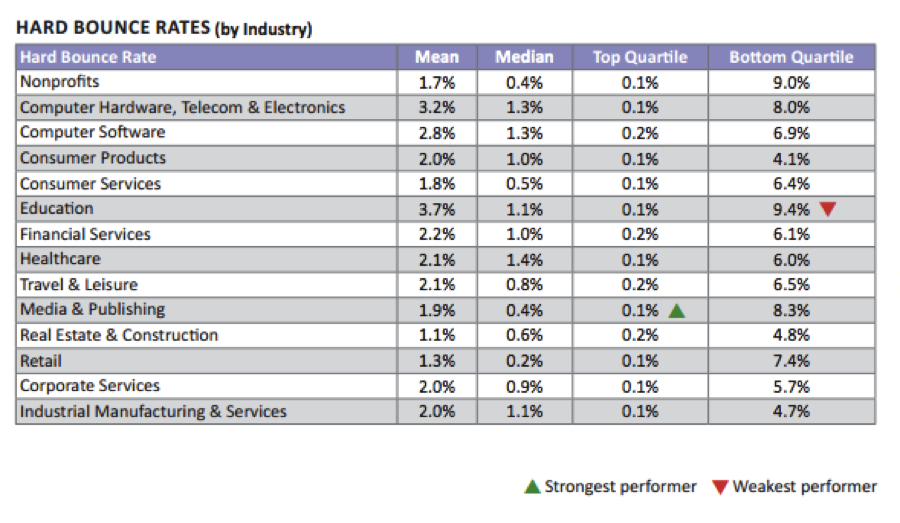 In email marketing, few things are as discouraging as high hard bounce rates. The hard bounce rate measures how many messages were undelivered either because the domain name doesn’t exist or the address itself fails to be recognized. A hard bounce rate is not to be confused with the soft bounce rate, which measures bounces that resulted from temporary email server issues that may be resolved on a future mailing. If you were fortunate enough to get a combined hard and soft bounce rate of 0 percent, it would mean all your emails were successfully delivered; however, that’s no guarantee that you’ll get any opens or clicks.
In email marketing, few things are as discouraging as high hard bounce rates. The hard bounce rate measures how many messages were undelivered either because the domain name doesn’t exist or the address itself fails to be recognized. A hard bounce rate is not to be confused with the soft bounce rate, which measures bounces that resulted from temporary email server issues that may be resolved on a future mailing. If you were fortunate enough to get a combined hard and soft bounce rate of 0 percent, it would mean all your emails were successfully delivered; however, that’s no guarantee that you’ll get any opens or clicks.
Silverpop provided a snapshot of how industry hard bounce rates compare in its “2013 Email Marketing Metrics Benchmark Study.” Silverpop’s data show the media and publishing industry is the strongest performer by having the lowest bounce rate, while the education industry is the weakest. “Top-performing companies had hard bounce rates roughly one-seventh that of bottom performers-which, when mailing to a list of 500,000, would be the difference between 500 hard bounces and 35,000,” the report states. See how your industry compares in the chart below.

Ignoring a high bounce rate can be the beginning of the end of your email marketing campaign. It’s a key factor in your sender reputation, and ISPs will send your messages to the junk folder or block you if you have too many bounces.
How to Fix a High Bounce Rate
Hard bounces are often the result of addresses entered incorrectly into the system, so to lower your hard bounce rate, look first to how you’re acquiring your addresses. Many retailers, for example, collect customer email addresses at the point of sale, relying on employees to enter addresses correctly. In cases such as these, a little employee education outlining the importance of accurate data and explaining how that data is used throughout the business can go a long way. Taking it a step further, email marketers can implement email validation to prevent inaccurate information from making it into their databases and correction to fix data entry errors.
Then there are email marketers who collect addresses via webpage forms. Unlike point-of-sale acquisitions, collecting data this way only depends on if the new contact is accurately typing his or her information. Here, asking people to confirm their email address or using automated verification processes are your best bet for capturing accurate, valid emails.
No matter how you collect your data, regular list cleaning is essential to help keep hard bounce rate low. According to Silverpop, 2013 top email marketing performers are likely more vigilant about performing list hygiene to remove undeliverable addresses.
Want to see how effective email validation can be at reducing your hard bounce rate? Get a free email validation report from TowerData!

photo credit: Joe Shlabotnik
 Affiliate Marketing
Affiliate Marketing Automotive
Automotive eCommerce and Retail
eCommerce and Retail FinTech
FinTech LeadGen
LeadGen Nonprofit and Political
Nonprofit and Political Payments
Payments Technology Platforms
Technology Platforms Tourism and Hospitality
Tourism and Hospitality
 In
In 

